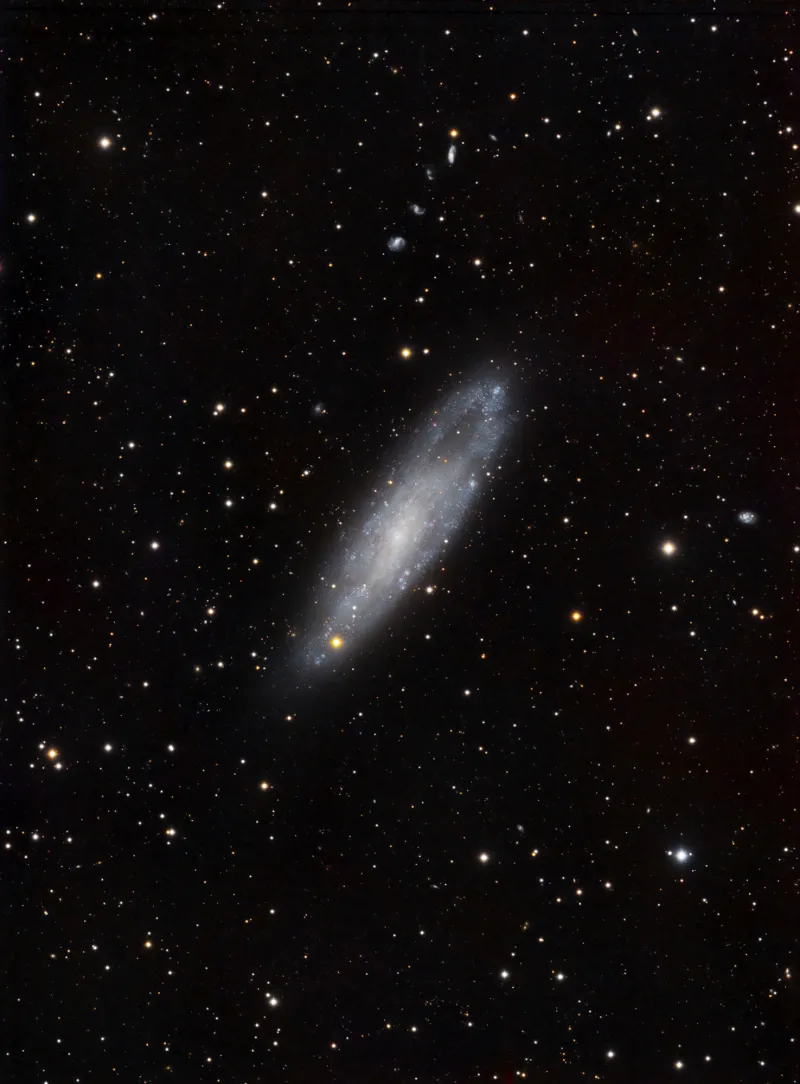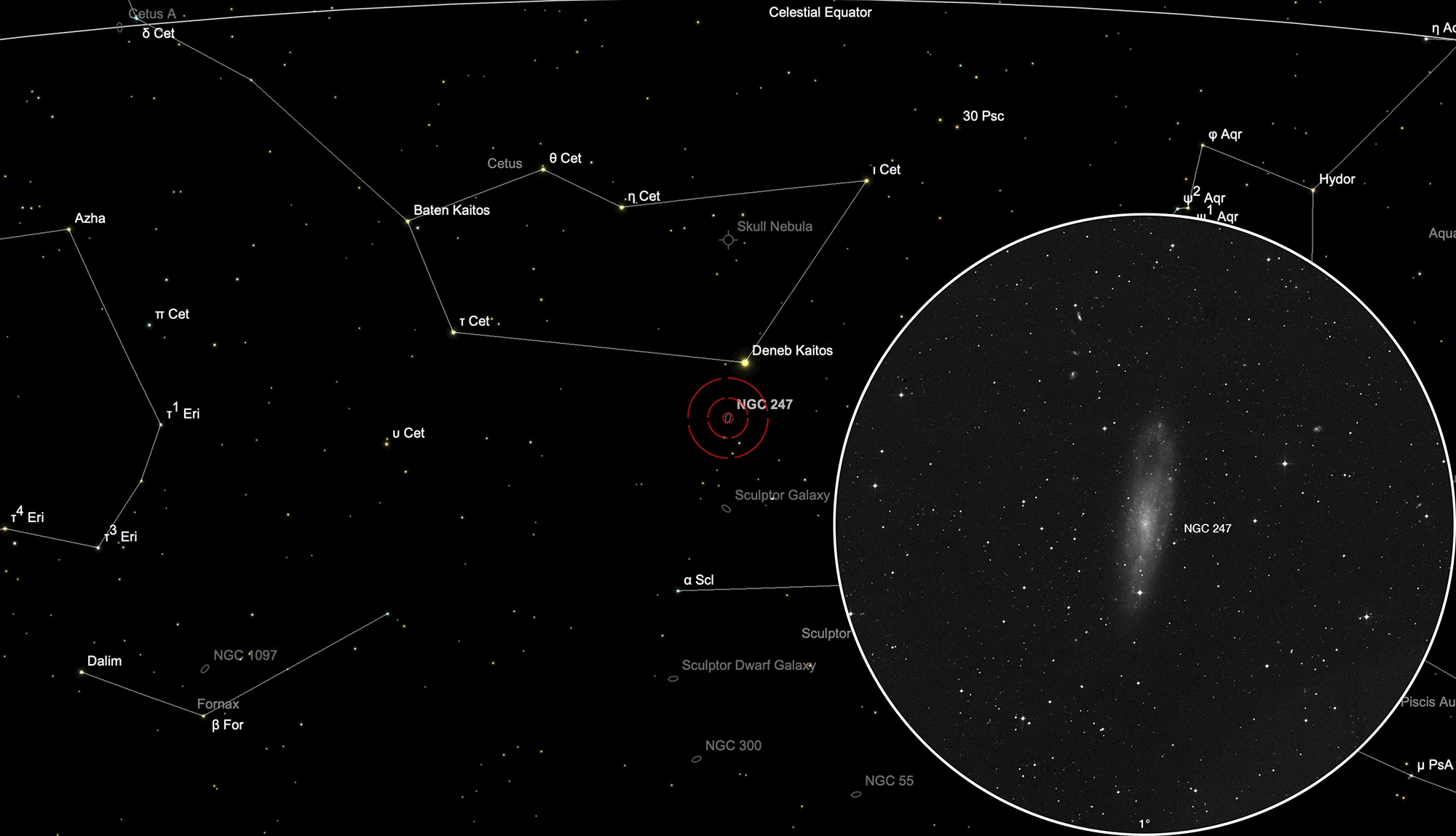Claw Galaxy (NGC 247)

History
This galaxy was discovered by William Herschel on 20 October 1784 using his 18.7 inch reflector. He cataloged it as V 20 (class V = very large nebulae) and noted: «A streak of light, nearly along the meridian, 26' long, 3 or 4' broad, pretty bright.» [463] Dreyer added it as NGC 247 to his «New General Catalogue» published in 1888. [313]
Physical Properties
NGC 247 is a dwarf, low surface brightness galaxy and of morphological type SAB(s)d. It is part of the Sculptor Group, a collection of galaxies associated with the Sculptor Galaxy (NGC 253). This is the nearest group of galaxies to the Local Group, which includes our Milky Way. A remarkable feature of this galaxy is a large void in the northern part of the disk. At a distance of about 3.5 Mpc, the void region in NGC 247 is approximately 3.4 kpc long. This is not empty space, but it contains mostly older, redder stars and no blue, younger stars. An analysis of age versus radius suggests little to no star formation in the void for more than 1 Gyr. It is speculated that it is caused by a recent interaction with a nearly dark subhalo that collided with the disc. [632]
| Designation | NGC 247 |
| Type | Gx (SBcd) |
| Right Ascension (J2000.0) | 00h 47m 08.3s |
| Declination (J2000.0) | -20° 45' 36" |
| Diameter | 19.2 × 5.5 arcmin |
| Photographic (blue) magnitude | 9.7 mag |
| Visual magnitude | 9.1 mag |
| Surface brightness | 14.4 mag·arcmin-2 |
| Position Angle | 172° |
| Redshift (z) | 0.000520 |
| Distance derived from z | 2.20 Mpc |
| Metric Distance | 3.590 Mpc |
| Dreyer Description | F, eL, vm E 172° |
| Identification, Remarks | WH V 20; h 57; GC 132; ESO 540-22; MCG -4-3-5; UGCA 11; IRAS 00446-2101 |
Finder Chart
The galaxy NGC 247 is located in the constellation Cetus. Just 4.5° to the south is the Silverdollar (NGC 253). The best observation time is June to March.
Visual Observation
400 mm Aperture: Due to its low position above the light-polluted southern sky above Milan, NGC 247 was nothing more than a pale, featureless streak, which stood out a little more clearly against the bright sky background when viewed indirectly. — 400 mm f/4.5 Taurus Dobsonian, Falera, SQM 20.9, 20. 9. 2025, 00:50 MESZ, Bernd Nies
